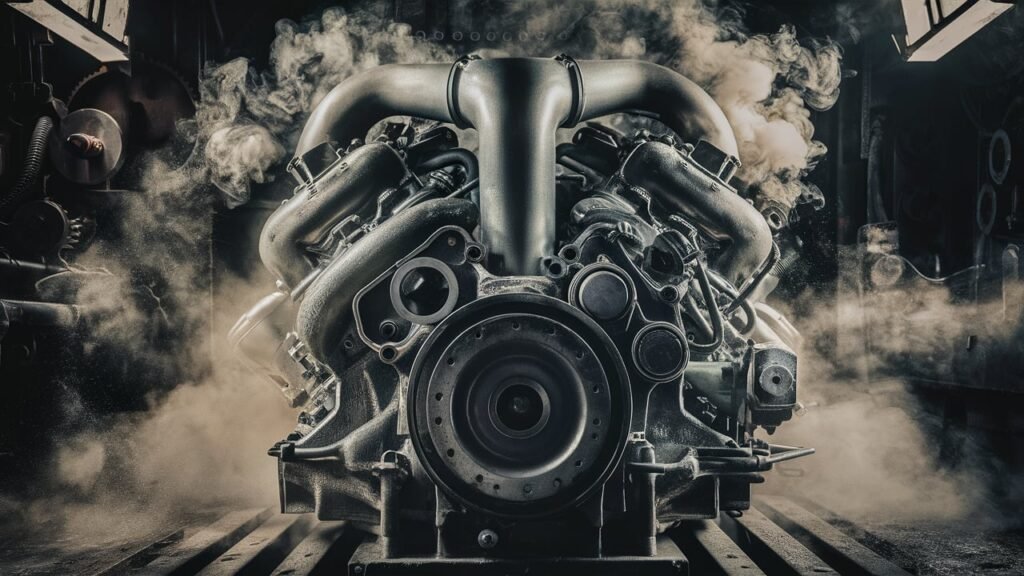
The Ultimate Guide to Car Engine Brake Fluid Maintenance
Within the intricate systems of a car, the unsung hero ensuring smooth deceleration and impeccable braking performance is none other than brake fluid. Delving into the realm of car engine brake fluid maintenance unveils a meticulous process that safeguards not just automotive components but the lives traveling within. This article serves as your compass through the labyrinth of brake fluid intricacies, shedding light on its essence in automotive safety.
The significance of routine car engine brake fluid maintenance emerges as a cornerstone in the edifice of vehicle safety protocols. Beyond mere mechanical intricacies, this practice epitomizes proactive care, urging enthusiasts and engineers alike to partake in the symphony of diligence that orchestrates cohesive braking harmony.
With a sole rationale—elevating road safety to unparalleled heights—the journey into maintaining brake fluid elucidates an elemental facet often overlooked by casual car owners.
Embark on this expedition with us to unravel the profound implications concealed in every drop of brake fluid that courses through your vehicle’s veins. As we voyage through each section meticulously crafted for clarity and precision, you’ll garner insights that elevate your comprehension of this vital automotive elixir – forging an unbreakable shield against potential hazards lurking unseen beneath the hood.
Join us in deciphering the Ultimate Guide to Car Engine Brake Fluid Maintenance; where vigilance meets vehicular integrity, ensuring your ride remains steadfast on the path to unwavering security.
Understanding Car Brake Fluid.
Brake fluid, a specialized hydraulic fluid, serves a crucial role in the braking system of vehicles. When you press the brake pedal, this non-compressible fluid transmits force from your foot to the brakes at each wheel, causing them to clamp down on the rotors or drums and slow down or stop the vehicle.
The primary function of brake fluid is to transfer hydraulic pressure created when applying the brakes throughout the system efficiently, allowing for precise control over stopping distances and ensuring optimal safety on the road.
In today’s market, various types of brake fluids are available, classified based on their chemical compositions and performance characteristics. Common variants include DOT 3, DOT 4, and DOT 5.1.

While they all serve the same fundamental purpose of hydraulic transfer in braking systems, these fluids differ in their boiling points, viscosity ratings, and compatibility with different materials used in brake systems. Understanding these distinctions is essential for selecting the most suitable brake fluid that complies with manufacturers’ recommendations for your specific vehicle make and model.
When choosing brake fluid for your car, it’s vital to adhere to the recommended specifications outlined by the manufacturer. For instance, some vehicles may require DOT 4 brake fluid due to its higher boiling point compared to DOT 3, providing enhanced performance under demanding driving conditions such as towing heavy loads or driving in mountainous terrain where brakes operate at high temperatures.
By following these guidelines and using the correct type of brake fluid tailored to your vehicle’s requirements, you can optimize braking efficiency and maintain a safe driving experience consistently.
Signs of Brake Fluid Issues.
Identifying signs of brake fluid issues is crucial for maintaining optimal braking performance and ensuring road safety. One common indicator of a brake fluid problem is the presence of leaks in the braking system. Leaks can occur due to worn-out seals or damaged brake lines, leading to a decrease in brake fluid levels over time.
If left unattended, leaks can compromise the effectiveness of the braking system, resulting in unpredictable stopping distances and potential loss of vehicle control. Regular inspections for any signs of leakage, such as wet spots near the wheels or under the car, can help detect issues early on.
Contamination of brake fluid is another telltale sign that maintenance is required. Contamination can happen when moisture seeps into the brake system, compromising the fluid’s integrity and performance.
This can lead to reduced braking efficiency, spongy pedal feel, or even complete brake failure in severe cases. By monitoring the color and consistency of the brake fluid through visual inspection or using testing strips, car owners can determine if contamination has occurred and take necessary corrective actions promptly.
Low brake fluid levels are not only a sign of potential leaks but also directly impact braking performance. Insufficient brake fluid volume can lead to air entering the hydraulic system, causing air bubbles that compress under pressure and reduce braking force.
This results in longer stopping distances and poor responsiveness when applying brakes. Recognizing early signs like a soft brake pedal or unusual noises during braking can prompt individuals to address low fluid levels promptly before more severe consequences arise, emphasizing how preventive action can prevent major safety risks on the road.
Brake Fluid Replacement Procedure.
When it comes to maintaining your car’s brake fluid, regular replacement is crucial for optimal performance and safety. Before replacing the old brake fluid with a new one, start by checking the brake fluid levels in the reservoir. Locate the brake fluid reservoir under the hood of your vehicle. Using a clean cloth, wipe off any dust or debris from the cap before unscrewing it carefully to access the fluid level.
To check the brake fluid level accurately, ensure that your vehicle is on a flat surface to prevent any spillage. The brake fluid level should fall between the minimum and maximum markings indicated on the side of the reservoir. If the level is below the minimum mark, it’s a clear indication that you need to replace your brake fluid promptly.

When it comes to replacing old brake fluid with new, always use high-quality brake fluid recommended for your specific make and model of vehicle. Begin by carefully draining out the old fluid from the reservoir using a turkey baster or a syringe. Refill with fresh brake fluid up to the maximum mark while avoiding overfilling. Take care not to introduce air bubbles into the system during this process as they can compromise braking efficiency.
During the replacement process, safety precautions are paramount. Always wear gloves and safety goggles to protect yourself from contact with brake fluids that can be corrosive. Additionally, avoid spilling any brake fluid on your vehicle’s paintwork as it can cause damage.
Once you’ve completed replenishing the brake fluid, securely fasten the reservoir cap back in place to prevent contamination and ensure a tight seal for optimal performance of your braking system.
Importance of Quality Brake Fluid.
When it comes to the maintenance of your car’s brake system, using high-quality brake fluid is paramount. Quality brake fluid plays a crucial role in ensuring the proper functioning of your vehicle’s braking system. It exhibits superior heat resistance properties, which is essential for preventing a drop in braking performance under extreme conditions such as heavy braking or driving on steep terrains.
Furthermore, quality brake fluid also helps maintain the integrity of rubber components within the brake system, thus contributing to its longevity and reliability. Opting for reputable brands that adhere to industry standards can significantly enhance the safety and efficiency of your vehicle’s braking capabilities.
Using incorrect or expired brake fluid can have severe consequences on your vehicle’s overall performance and safety. Incorrect brake fluid not only hampers the effectiveness of your brakes but can also lead to accelerated wear and tear of critical components like calipers and master cylinders.
Additionally, expired brake fluid tends to absorb moisture over time, which compromises its boiling point and hydraulic properties, ultimately diminishing its ability to transmit force effectively.

These issues can result in decreased responsiveness in braking, longer stopping distances, or even complete brake failure in extreme cases. To avoid such risks, it is crucial to adhere strictly to manufacturer recommendations regarding the type and quality of brake fluid suitable for your specific car model.
Choosing the right type of brake fluid tailored to your vehicle is essential for maintaining optimal performance standards. Different vehicles require specific types of brake fluids based on their design and operating conditions.
Factors like viscosity rating, boiling point specifications, and compatibility with anti-lock braking systems (ABS) need to be considered when selecting the appropriate brake fluid for your car. Consulting your vehicle’s manual or seeking advice from professional mechanics can assist you in identifying the most suitable option best suited for your automobile’s needs.
By investing in high-quality brake fluid designed for your particular make and model, you not only ensure reliable braking performance but also safeguard against potential complications arising from using an incompatible product.
Maintaining Optimal Brake System Performance.
Ensuring that your car’s brake system is in top condition is crucial for overall vehicle safety. A clean and well-maintained braking system not only enhances stopping power but also prevents potential accidents on the road. Regular maintenance of the brake system, including the brake fluid, plays a vital role in keeping your vehicle safe for you and others on the road.
For optimal performance, it is recommended to check and change your brake fluid according to the manufacturer’s specifications. Typically, checking the brake fluid level should be done during regular service intervals or if you suspect any issues with your brakes. As a rule of thumb, changing brake fluid every 2 years or as advised by the manufacturer can help maintain the effectiveness of your braking system.
In addition to monitoring and changing brake fluid regularly, there are other maintenance tips that can contribute to optimal brake system performance. Inspecting brake pads and rotors for wear and tear, ensuring proper adjustment of the parking brake, and examining brake lines for leaks or damages are essential tasks in maintaining a healthy braking system.
By staying proactive with these maintenance routines, you can extend the lifespan of your brakes while enhancing safety on the road.
By prioritizing regular inspections and changes of brake fluid alongside other necessary maintenance tasks, you pave the way for a well-functioning braking system that can swiftly respond to emergency situations when needed. Remember, preventative measures like consistent upkeep ultimately lead to safer rides and peace of mind behind the wheel.
Conclusion: Ensuring Vehicle Safety through Proper Brake Fluid Maintenance.
In conclusion, maintaining the brake fluid in your car’s engine is a critical aspect of vehicle safety. The braking system’s reliability heavily relies on the integrity of the brake fluid, as it plays a pivotal role in transferring the force applied to the brake pedal into stopping power. Regularly monitoring and replacing brake fluid not only ensures optimal braking performance but also safeguards against potential brake failures that can lead to accidents or damage.
By adhering to the recommended specifications for brake fluid type, recognizing early signs of issues, following proper replacement procedures, and using high-quality brake fluid, individuals can significantly contribute to maintaining a safe driving environment for themselves and others on the road.
Remember, meticulous attention to detail when it comes to brake fluid maintenance is an investment in both preserving your vehicle’s functionality and prioritizing road safety. Stay proactive, stay informed, and stay safe by incorporating proper brake fluid maintenance into your routine vehicle care practices.




